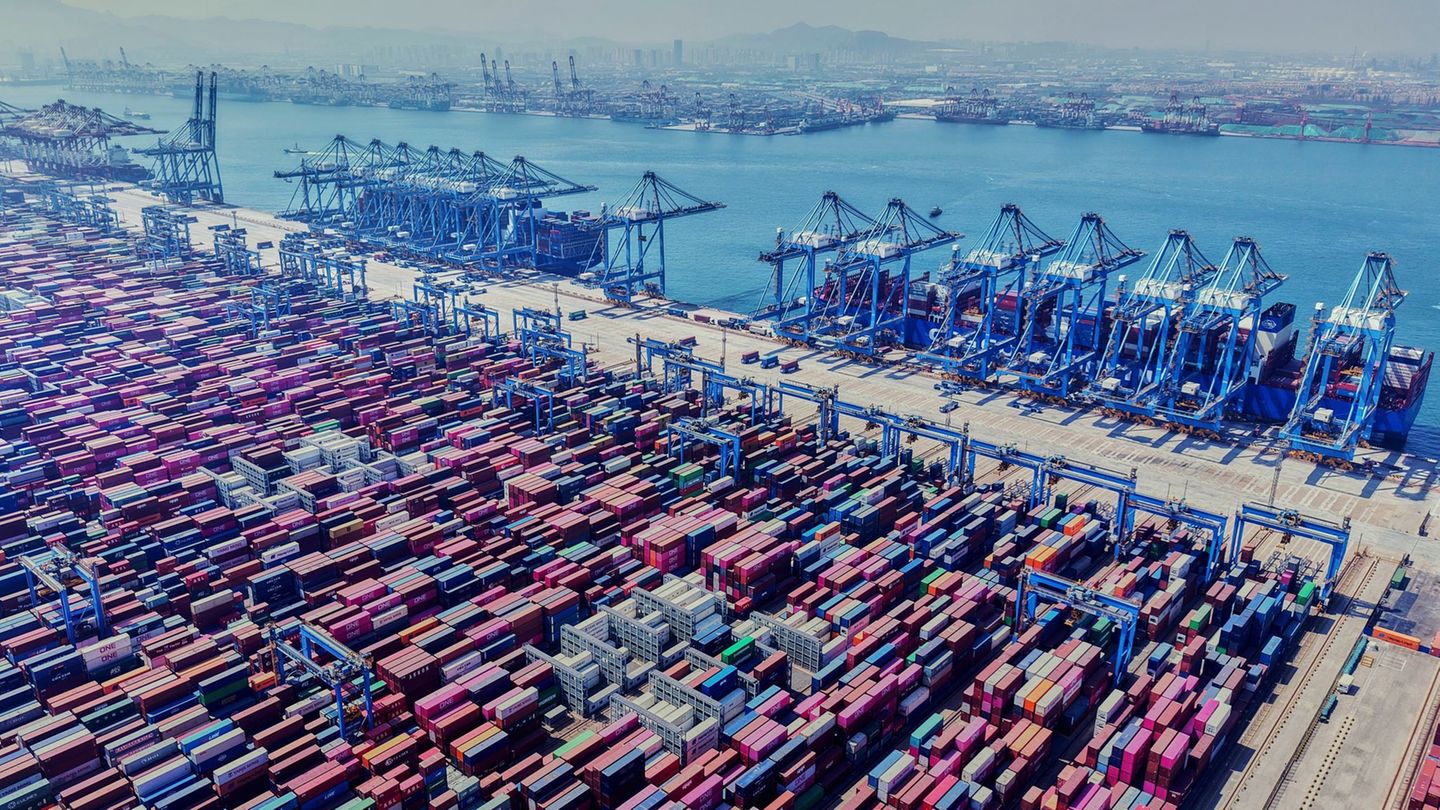Corporate bankruptcies
How bad is the “wave of bankruptcies” really?
Copy the current link
The number of company bankruptcies is increasing, which is bad news. A closer look at the data shows how dramatic the situation really is.
The government is broken, the economy is in ruins, the auto industry is in dire straits. The mood in Germany as a business location was already better. The increasing number of company bankruptcies has been causing additional panic for some time now. The term “wave of bankruptcies” is going around.
The credit agency Creditreform expects the highest number of bankruptcies in nine years in 2024 and the numbers will continue to rise in the coming year. The economists at the Halle Institute for Economic Research recently spoke in a study of the “perfect storm” given the highest number of insolvencies in an October in 20 years. So there is no shortage of disaster vocabulary, but how bad is the situation really?
In fact, the insolvency figures from the Federal Statistical Office look dramatic at first glance. Accordingly, 23 percent more companies filed for regular insolvency in October than in October of the previous year. Since June 2023, statisticians have recorded double-digit growth rates almost consistently. The bottom line is that there were 17,800 company bankruptcies last year. For 2024, Creditreform expects a total of around 22,400 bankruptcies – around a quarter more than in the previous year.
That’s not nice, but – from a historical perspective – it’s also not completely unusual, as a look at the long-term data shows. The number of bankruptcies around the turn of the millennium was significantly higher for many years, as the journalist Jan Schwochow recently pointed out in a highly regarded post on LinkedIn. In the years 2001 to 2011, which were marked by financial crises, the Federal Statistical Office recorded more than 30,000 corporate bankruptcies annually (see graphic). In 2003 and 2004 there were more than 39,000 each. During the Corona pandemic, on the other hand, the numbers fell to a very low level – also due to a temporary suspension of the obligation to file for insolvency – so that some bankruptcies were simply postponed.
At this point our editorial team has integrated content from Datawrapper GmbH.
Due to your privacy settings, this content has not been loaded to protect your privacy.
Wave of bankruptcies, right?
In view of this, some experts find the term bankruptcy wave inappropriate for the current situation. “This is not a wave, not even a flood,” Wirtschaftswoche recently quoted Christoph Niering, chairman of the insolvency administrators’ association VID. He only sees a “perceived wave of insolvencies,” which is noticeable but not unexpected or dramatic.
However, the situation could soon deteriorate further. “With some delay, the crises of recent years are now having an impact on companies as bankruptcies,” says Patrik-Ludwig Hantzsch, head of economic research at Creditreform. "The economic policy standstill and declining innovative power have weakened Germany as a business location. We therefore expect a further increase in cases in 2025." Hantzsch warns that values like those in 2009 and 2010, when around 32,000 companies went bankrupt every year, could soon be back in sight.
However, the number of bankruptcies alone is only of limited significance. After all, thousands of new companies are created every year, others cease operations without going bankrupt - while many insolvent companies are able to continue after successful restructuring. For 2023, the Federal Statistical Office recorded 118,000 business start-ups and 97,000 business closures with greater economic importance. According to official statistics, over the past 20 years the number of relevant start-ups has always been higher than the number of company closures.
These well-known companies have filed for bankruptcy

esprit
The fashion group Esprit is finally closing its branches in Germany. This is the sad result of the insolvency proceedings, as the DPA news agency reports. In May, the company filed for bankruptcy for its European operations. At that time it was said that there were discussions with an investor, but the branches would only remain open “until further notice”. Almost three months later it is clear: all remaining 56 branches will finally close by the end of the year. This cost around 1,300 employees their jobs. Things didn't look good for the branches right from the start, after all, it was the second insolvency proceedings in Germany in just four years. In 2020, the group had already closed 50 branches - and laid off a third of the workforce. However, Esprit fashion will continue to exist, according to the plan of the new owner, the British financial investor Alteri. Esprit is active in around 40 countries worldwide and has its headquarters in Ratingen and Hong Kong.
© Schoening / Imago Images
Back
Further
Worry about major bankruptcies
How badly a wave of insolvencies hits the economy also depends largely on how many large companies are affected. A Karstadt bankruptcy is different than the collapse of a small business with a handful of employees. In terms of numbers, the statistics this year are once again dominated by companies with a maximum of ten employees - according to Creditreform, they account for more than 80 percent of company bankruptcies. What is also noticeable is the above-average increase in major bankruptcies. In addition to the renewed insolvency of Galeria Karstadt Kaufhof, prominent cases include the bankruptcies of FTI Touristik and Esprit. According to Creditreform, a total of 320,000 jobs have been threatened or lost due to corporate insolvencies this year. A significant increase compared to the previous year when 205,000 jobs were affected.
Other experts are also watching the development of major bankruptcies in Germany with concern. It is currently “stable at a high level,” writes restructuring consultancy Falkensteg in its latest insolvency report. In the third quarter, 45 companies with sales of more than 20 million euros had to file for bankruptcy. That was three fewer than in the same period last year, but significantly more than the average of the last five years, in which only 35 major insolvencies were counted per quarter. Whether you call the insolvency situation a wave or not – dangerous currents are definitely there.
The article first appeared on December 5th and was updated with the latest Creditreform figures on December 16th
Source: Stern




